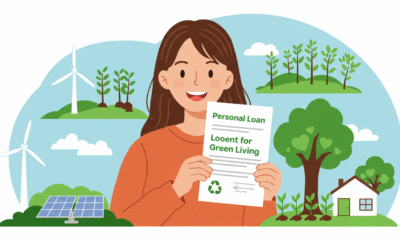Did you know that 86% of people want to live more sustainably? Sadly, many people are not doing enough. One thing that you can do to help the planet more is use a vegetation management company.
The companies in vegetation management have an important function to perform regarding sustainability because it promotes ecological balance and ensures natural resource protection. It can prevent overgrown vegetation, invasive species, or tree hazards, which helps maintain ecosystem health and resiliency. This is a great way to lower your environmental impact.
They do so through practices such as selective clearing and habitat restoration to avoid environmental degradation and protect biodiversity. Vegetation management further assists in providing sustainable energy through the maintenance of clear utility corridors, which minimizes power outages and lessens the risk of wildfires.
By incorporating environmental sensitivity into their methods, these companies enable communities to prosper with minimal impact on the natural landscapes of tomorrow, thus meeting their commitments to long-term sustainability.
Balancing the preservation of natural ecosystems with the need to maintain critical infrastructure is no small feat. Enter vegetation management companies—key players dedicated to ensuring that this delicate balance is not only achieved but sustained. These specialized firms play a crucial role in safeguarding both nature and infrastructure, combining cutting-edge techniques with a deep respect for the environment.
What Is Vegetation Management?
Vegetation management involves monitoring, maintaining, and caring for plant life to ensure it does not interfere with human activities, such as power line operation, roadways, railways, or industrial facilities. However, it’s much more than trimming trees—the process demands strategic, science-based approaches to prevent overgrowth while minimizing environmental impact.
Why Is Vegetation Management Critical?
1. Ensuring Public Safety
Overgrown vegetation can obstruct visibility on roads or paths, leading to accidents. Tree branches entangled with power lines increase the risk of electrical outages, fires, or even personal injuries. By addressing such concerns, vegetation management companies help enhance public safety.
2. Maintaining Infrastructure Reliability
Critical infrastructure, such as power grids or railways, needs to operate without interruption. Unchecked plant growth can put these systems at risk of failure. Vegetation management ensures proper clearance to maintain uninterrupted infrastructure functionality.
3. Protecting the Environment
A pivotal aspect of vegetation management is preserving the health of natural ecosystems. Companies use environmentally sustainable practices to reduce harm to surrounding flora and fauna while targeting invasive vegetation that threatens native species. You can also provide fruit tree mulch like we talk about in this article.
4. Reducing Fire Risks
Dense forests and overgrown vegetation near utility lines or other structures are potential fire hazards, particularly in high-risk regions. Proactive vegetation management significantly reduces the likelihood of wildfires caused by human infrastructure or electrical malfunctions.
Techniques Utilized by Vegetation Management Companies
Modern vegetation management companies deploy a range of innovative methods to achieve their goals. Here are some of the most common techniques utilized:
- Mechanical Clearing: Using specialized machinery to trim or clear overgrowth, particularly in challenging or expansive landscapes.
- Chemical Applications: Applying targeted herbicides in a responsible manner to control invasive species or prevent regrowth in specific areas.
- Biological Control: Introducing natural predators or grazing animals to manage vegetation in an eco-conscious way.
- Technology Integration: Incorporating tools like drones, GIS mapping, and remote sensing to monitor, assess, and manage vegetation more efficiently.
- Prescriptive Pruning: Strategically pruning trees to maintain their health and appearance while eliminating risks to infrastructure.
These techniques are tailored to specific environments, ensuring that management efforts are both effective and sustainable.
The Future of Vegetation Management
With the rapid advancement of technology, vegetation management continues to evolve. Artificial intelligence (AI) and machine learning now allow companies to predict vegetation growth patterns and optimize management strategies. Additionally, sustainability remains a central focus as these firms work to balance ecological preservation with human needs.
Furthermore, the increase in renewable energy projects, such as solar and wind farms, calls for a more diversified approach to vegetation management. Protecting these newer forms of infrastructure while maintaining biodiversity will be a key challenge in the years ahead.
Partnering for Sustainability
The efforts of vegetation management companies highlight the importance of collaboration between humans and nature. By prioritizing safety, efficiency, and ecological health, these firms ensure that infrastructure development complements, rather than competes with, the environment. Their pivotal role not only protects our infrastructure but also underscores the importance of long-term, sustainable planning.
If you’re considering professional services to manage vegetation near critical infrastructure, look no further than the experts leading the charge in innovation and environmental stewardship. Invest in solutions that protect both your operations and the natural world.


 Environment10 months ago
Environment10 months agoAre Polymer Banknotes: an Eco-Friendly Trend or a Groundswell?

 Environment11 months ago
Environment11 months agoEco-Friendly Home Improvements: Top 7 Upgrades for 2025

 Features9 months ago
Features9 months agoEco-Friendly Cryptocurrencies: Sustainable Investment Choices

 Features10 months ago
Features10 months agoEco-Friendly Crypto Traders Must Find the Right Exchange






























